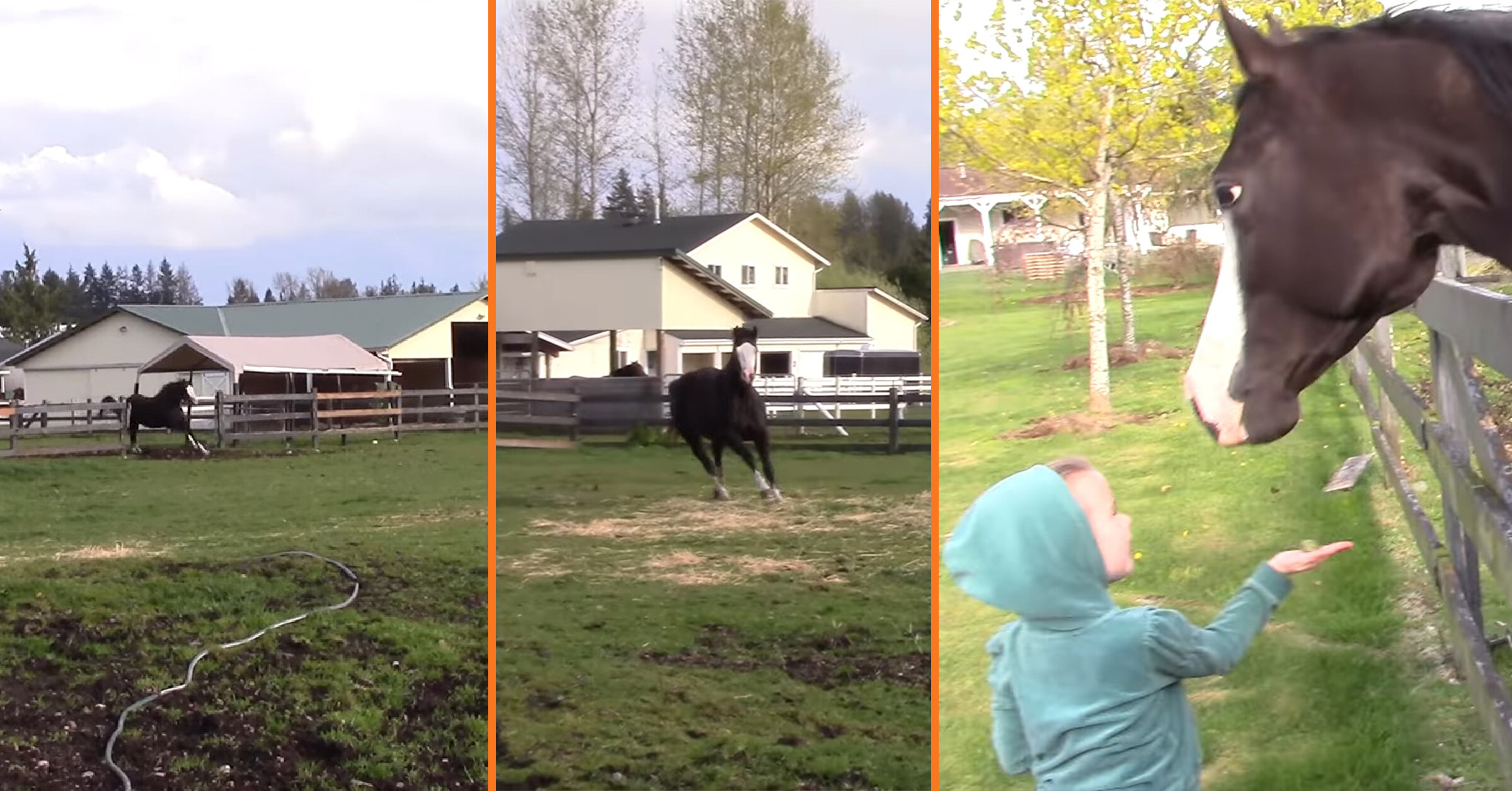Did you know that horses should eat constantly because their GI tract is designed to always be digesting small amounts of forage as they graze nearly around the clock? The horse’s stomach is relatively small and can only hold so much at one time. Most of a horse’s energy comes from fermenting forages in the hindgut.

Just take a look at these horses running impatiently to eat their dinner. Generally, most horses do well grazing on high-quality grass pastures and hay and don’t need grain. However, feeding a horse once a day is acceptable if done correctly. If you feed your horse once a day, make sure that they can’t finish their food in less than 12 to 14 hours.

Horses do not have the ability to control their eating so that they will stop eating when they have met their nutrient requirements. They will continue to eat, which can lead to digestive and lameness problems. When feeding the horse, there are three general guidelines one should follow. Feeds should be fed at least twice a day. Feeds should be fed in equally divided amounts. Feeds should be fed near to or at the same time each day and at even intervals throughout the day.

Many pleasure and trail horses don’t need grain: good-quality hay or pasture is sufficient. If hay isn’t enough, grain can be added, but the bulk of a horse’s calories should always come from roughage. Horses are meant to eat roughage, and their digestive system is designed to use the nutrition in grassy stalks.

A horse can live for almost a month without food, but within a mere 48 hours without water, a horse can begin to show signs of colic and can quickly develop an impaction, lethargy, and life-threatening sequelae. Also, a change in the type of hay may cause colic for many reasons. Hay of poor quality is often less digestible, predisposing to impaction. Changing types of hay as in Alfalfa and Bermuda may be related to colonic pH changes resulting from calcium differences in the two hays.
